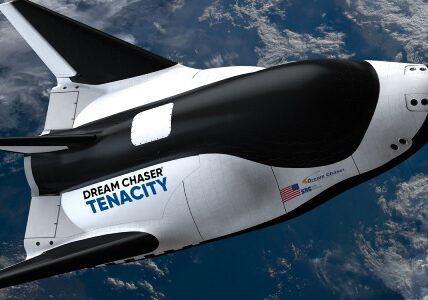The SpaceX Starship rocket is back on the launchpad at the Starbase facility in Boca Chica, Texas, following two suspenseful and dramatic test missions in 2023.
The goal of the deep-space rocket system is to pass an integrated flight test lasting an hour. In the event that the mission is successful, the enormous craft will land in the Indian Ocean, positioning it for later, more difficult test flights and the eventual transportation of NASA astronauts to the moon.
According to an email from SpaceX sent Wednesday afternoon, the launch could occur at any point during a 110-minute window that opens at 7 a.m. CT (8 a.m. ET) on Thursday. Half an hour prior to the much awaited takeoff, the event will go live on the corporate website.
SpaceX views the Starship system as essential to achieving its original goal of sending humans to Mars. Crucially, NASA has selected Starship to be the landing craft for the Artemis III mission, which is scheduled to launch as early as September 2026, and will transport astronauts to the lunar surface.
The Super Heavy booster, which is the launch vehicle’s bottommost stage, is expected to ignite and take off over the Gulf of Mexico on Thursday if all goes as planned.
The Super Heavy rocket, which is affixed to the upper stage of the Starship spacecraft, will exhaust the majority of its fuel approximately three minutes into the flight.
The Starship spaceship will then use its own engines to continue accelerating to record-breaking speeds, while the booster aims to make an autonomous, controlled landing in the ocean.
Reaching for orbital velocities
According to SpaceX CEO Elon Musk, one of the main objectives of these initial test flights is to propel Starship to orbital speeds, or speeds fast enough for the spacecraft to establish a stable orbit around the planet.
Generally, it takes above 17,500 miles per hour (28,000 km per hour) to accomplish such an accomplishment.
On this flight, Starship will not, however, actually attempt to achieve orbit. Rather, the spaceship is scheduled to make a hard landing in the Indian Ocean, ideally over 230 miles (370 km) from the closest land mass, as per records released by the Federal Aviation Administration, the agency responsible for permitting commercial rocket launches.
Tech demos and starship tests
Before Starship can begin coasting, its engine will need to fire for roughly six minutes. After that, the spaceship will conduct a few crucial testing and technological demonstrations.
In order for Starship to launch satellites into space on upcoming flights, a hatch on the capsule needs to swing open. Starship will first try to open this hatch.
Additionally, SpaceX will do a “propellant transfer demonstration,” as the firm describes it. As stated in an email from NASA in December outlining the test, the objective is to transfer some of the fuel inside the Starship vehicle from one tank to another.
That demonstration was created by SpaceX engineers to start figuring out how Starship will be refuelled while in orbit on upcoming missions.
NASA’s Artemis lunar mission
Filling up the spacecraft’s fuel tank is essential for Starship’s upcoming high-profile missions.
Under NASA’s Artemis programme, Starship will have to wait to travel to the moon while SpaceX launches independent vehicles that will solely carry fuel for the spacecraft. SpaceX might need to make more than a dozen refuelling trips in order to reach the moon.
Regulators gave SpaceX permission on Wednesday to conduct this most recent test flight.
The Starship vehicle will try to start its enormous engines again after around 40 minutes of flight before it crashes back towards the ocean.
The thrilling test-flight procedure of SpaceX
Musk stated that he is more optimistic about this flight’s success than he was about the 2023 attempts. If the test flight is successful, the business might receive vital information that would enable Starship to proceed to more challenging test flights.
“I don’t want to jinx it, but I think the probability of reaching orbit is good — 80%,” he said during a recent talk posted to social media . “Certainly the third flight is a much better rocket than flights one or two.”
Officials from SpaceX have stated time and time again that the firm does not anticipate perfect accuracy on these preliminary test flights.
“Each of these flight tests continue to be just that: a test. They aren’t occurring in a lab or on a test stand, but are putting flight hardware in a flight environment to maximize learning,” the company said in a statement posted to its website.“This rapid iterative development approach has been the basis for all of SpaceX’s major innovative advancements.”















